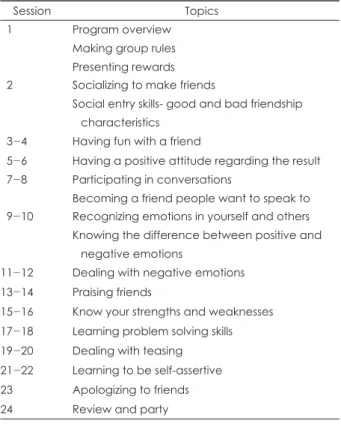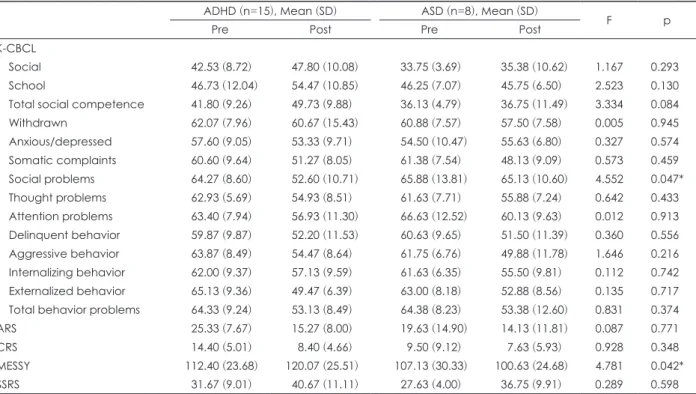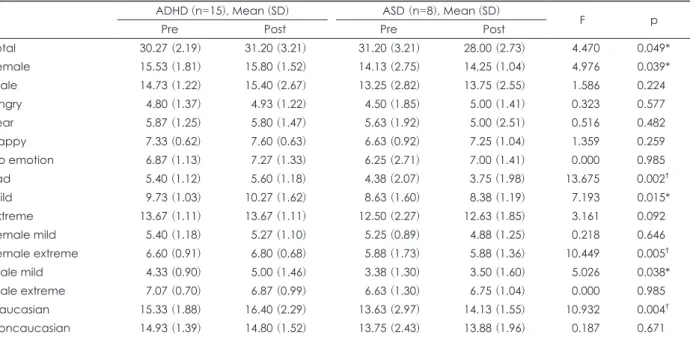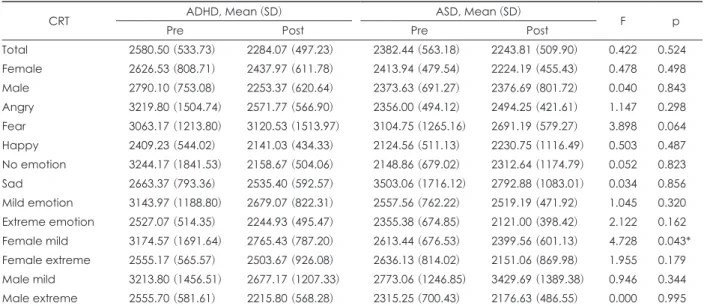INTRODUCTION
Social skills are specific behaviors used to establish posi- tive social relationships, encompassing both the verbal and non-verbal behaviors required for effective communication.
During childhood, social skills are associated with multiple aspects of development, including relationships with peers, academic achievement, and mental health; therefore, chil- dren with deficits in social skills experience various diffi- culties in development [1].
The ability to recognize the emotions behind facial expres- sions is essential for understanding the emotions and inten- tions of others and responding appropriately. This is impor- tant for establishing and maintaining positive interpersonal
relationships, including those with peers, and can also act as a criterion for determining which social skills to use and when to use them [2].
Emotion recognition is fundamental to the development of social interactions, and social interactions also help to de- velop emotion recognition by providing more opportunities to recognize verbal and non-verbal emotional cues [3]. Au- tism spectrum disorder (ASD) is characterized by difficulties in social interaction and verbal and non-verbal communica- tion; thus, individuals with ASD not only have difficulty rec- ognizing facial expressions, but also fewer opportunities to develop this ability. Several studies have reported that indi- viduals with ASD have difficulty recognizing social cues present in tone and physical posture, and there is also evi- dence of impaired recognition of facial expressions [3]. Chil- dren with ASD tend to have particular difficulty recognizing expressions showing negative emotion. Although this im-
This is an Open Access article distributed under the terms of the Creative Commons Attribution Non-Commercial License (https://creativecommons.org/licenses/by-nc/4.0) which permits unrestricted non-commercial use, distribution, and reproduction in any medium, provided the original work is properly cited.
Discriminative Effects of Social Skills Training on Facial Emotion Recognition among Children with Attention-Deficit/Hyperactivity Disorder and Autism Spectrum Disorder
Ji-Seon Lee
1, Na-Ri Kang
2, Hui-Jeong Kim
2, and Young-Sook Kwak
31
Balgeunmaeum Psychiatric Clinic, Gwangju, Korea
2
Department of Psychiatry, Jeju National University Hospital, Jeju, Korea
3
Department of Psychiatry, Jeju National University School of Medicine, Jeju, Korea
Objectives: This study investigated the effect of social skills training (SST) on facial emotion recognition and discrimination in chil- dren with attention-deficit/hyperactivity disorder (ADHD) and autism spectrum disorder (ASD).
Methods: Twenty-three children aged 7 to 10 years participated in our SST. They included 15 children diagnosed with ADHD and 8 with ASD. The participants’ parents completed the Korean version of the Child Behavior Checklist (K-CBCL), the ADHD Rating Scale, and Conner’s Scale at baseline and post-treatment. The participants completed the Korean Wechsler Intelligence Scale for Chil- dren-IV (K-WISC-IV) and the Advanced Test of Attention at baseline and the Penn Emotion Recognition and Discrimination Task at baseline and post-treatment.
Results: No significant changes in facial emotion recognition and discrimination occurred in either group before and after SST. How- ever, when controlling for the processing speed of K-WISC and the social subscale of K-CBCL, the ADHD group showed more improve- ment in total (p=0.049), female (p=0.039), sad (p=0.002), mild (p=0.015), female extreme (p=0.005), male mild (p=0.038), and Cauca- sian (p=0.004) facial expressions than did the ASD group.
Conclusion: SST improved facial expression recognition for children with ADHD more effectively than it did for children with ASD, in whom additional training to help emotion recognition and discrimination is needed.
Key Words: Attention-deficit/hyperactivity disorder; Autism spectrum disorder; Social skills training; Facial recognition.
Received: February 27, 2018 / Revision: May 2, 2018 / Accepted: May 31, 2018
Address for correspondence: Young-Sook Kwak, Department of Psychiatry, Jeju National University School of Medicine, 15 Aran 13-gil, Jeju 63241, Korea Tel: +82-64-717-1850, Fax: +82-64-717-1849, E-mail: yskcpy@jejunu.ac.kr



